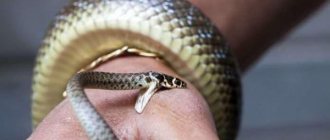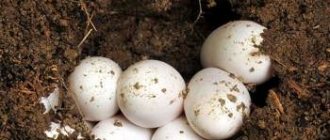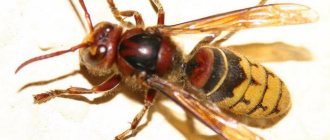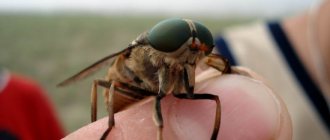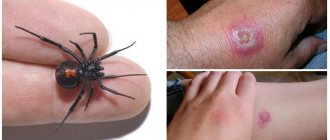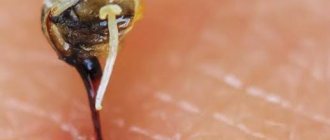In the modern world, the popularity of keeping exotic wildlife at home is growing at a frantic pace every year. In addition to cute Raccoons, tarantula spiders can be seen in domestic foxes, iguanas and other equally beautiful pets.
With their terrifying appearance, tarantulas strike fear into the largest percentage of people. However, there are also those who are crazy about these creatures. Despite the large number of recommendations and rules for keeping spiders, tarantulas are unpretentious in care and very independent.
Beginners can also purchase the safest breeds and become real owners of a home terrarium. However, sooner or later the question arises: “How aggressive can tarantulas be and what are the consequences of a tarantula spider bite?”
Content
- 1 Spider Venom 1.1 Neurotoxic Venom
- 1.2 Necrotic poison
- 2.1 Necrotic bite
- 3.1 Brazilian wandering spider ( Phoneutria
)
(
Hadronyche
and
Atrax
)
) 3.3.1 Black widows (
Latrodectus
)
_
)
- 3.4.1 Loxosceles ( Loxosceles
)
)
)
- 3.6.1 New World tarantulas
_
)
)
- 4.1 Measurements
Spider venom
Neurotoxic poison
Essentially, this poison affects the central nervous system. Among spiders, it is found among webworms, namely karakurts and black widows.
Necrotic Poison
Known spiders with venom that causes necrosis are individuals from the family Sicariidae, which includes Loxosceles and the six-eyed sand spider ( Sicarius hahni
).
Spiders from this family possess the dermonecrosis substance sphingomyelinase D
,[1][2], which is found in only a few pathogenic bacteria.[3][4].
How dangerous
As mentioned above, the most common house spiders (skin spiders, house web spiders) do not have the teeth or venom to cause you significant harm.
Spiders do not pose a real “physical” threat to humans. The same cannot be said about emotional well-being, because they look scary to most people.
One myth that is worth debunking is that the venom of the moth is strong enough to kill a person, but their fangs are too weak to penetrate the skin. There is no reliable evidence that the poison can harm humans.
Unless provoked, dangerous arthropods will be reluctant to bite. But when you accidentally put your foot in a shoe, where they hide will defend themselves.
Types of spiders whose venom has medical significance
Brazilian wandering spider (Phoneutria)
Hexathelidae (Hadronyche and Atrax)
Hexathelidae
For example,
Atrax robustus
(the only mygalomorph spider distantly related to araneomorph spiders) is considered one of the most venomous spiders in the world.
Web spiders (Theridiidae)
Only two genera of the web spider family are of medicinal importance. One of them is black widows, whose bites have caused more deaths than all other spiders. The second is steatodes, but the bites of these spiders are much less dangerous.
Black widows (Latrodectus)
Female Latrodectus lilianae
Symptoms caused by a black widow bite are called latrodecticism[5]. these spiders are neurotoxic.[6] Only females bite. The location of the bite is difficult to determine visually, but the pain is comparable to a pin prick. After some time, two small red dots, mild erythema and swelling appear at the site of the bite. There are no necrotic wounds. The venom is yellow, oily, and contains α-latrotoxin, which causes the release of acetylcholine, norepinephrine and other mediators from the presynaptic endings, followed by depletion of their reserves. 30-60 minutes after a spider bite, painful muscle spasms appear, which spread from the bite site to the large muscles of the limbs and torso. Then - severe tension in the muscles of the anterior abdominal wall and excruciating pain (due to such symptoms, a false belief in peritonitis is possible), but palpation of the abdomen is painless. In addition, drooling, heavy sweating, vomiting, arterial hypertension, tachycardia, shortness of breath, anxiety, headache, weakness, fasciculations, paresthesia, hyperreflexia, urinary retention, contractions and premature birth in pregnant women are possible. Rarely, rhabdomyolysis and renal failure occur. Death may occur due to respiratory arrest, hemorrhagic stroke, or heart failure (usually in small children and debilitated patients). The pain begins to decrease within the first 12 hours, but may increase again in the following days and weeks.
Steatoda
Steatoda capensis
Steatodas, or sometimes called false black widows, resemble black widows in appearance (size and body shape), which is not surprising, since they are in the same family. The bite of steatodes bears little resemblance to the bites of true widows, although the bites of some species have medical significance. Steatoda grossa bite
) affects the human body like a very small widow's bite.
The medical community gave the name steatodism to the symptom of a steatod bite. There are two species of steatoda in Europe whose bites cause problems ( Steatoda paykulliana
and
S. nobilis
), and one in New Zealand and South Africa (
S. capensis
).
The use of isolated black widow venom has been used well against steatosis.[7] Additionally, the developed venom has virtually no remission against Steatodes bites, unlike true widows where 5% of those bitten die even after administration of antitoxins.
It differs from widows in the presence of a red hourglass-shaped spot on their abdomen (sometimes on their back). However, adult black widows may not have a pattern.
Sicariidae
Loxosceles
Mouse spiders (Missulena)
Tarantula spiders (Theraphosidae)
Tarantulas of the New World
The bites of most new world spiders are comparable to a bee or wasp sting and pose a risk of complications for people who are allergic to wasp and bee venom.
Tarantulas of the Old World
Cheiracanthium
Heteropoda
Red-backed jumping spider (Phidippus johnsoni)
Female Phidippus johnsoni
(?) 14 mm
Some people have reported being bitten by the red-backed jumping spider, one of the most commonly encountered species of the genus Phidippus
. Some messages have come from Colombia, however, their distribution is wider and people living in other places may also come across them. Their relatively large size and bright, red back color (and females also have a black stripe on their back) make them easily visible. The body length of this species is 12 mm.
It is not yet clear how redback jumping spider bites occur. For most large spiders, the consequences of a bite are not much different from being stung by a wasp or bee.
general information
Just looking at a spider gives most of us a strange nervous feeling that can't be explained, but is there.
Some feel the desire to immediately destroy the small creatures (sometimes a great desire), others want to capture and free them. When it comes to common house spiders, there are a couple of key things to be aware of.
There are two main categories of indoor house spiders. The first are hunters, the second are builders.
Hunters
The hunters are wolf spiders (large hairy creatures), jumping spiders, shepherd spiders, and crab spiders. These guys like to be outside more than in your house. If you find one, they most likely came by mistake and are actively trying to find a way out.
Builders
Construction spiders are the ones you are most likely to find in your apartment.
Cobwebs: responsible for the random webs scattered around the house. The most common type of spider. They are greyish, brownish with markings on the belly.
Basement
Basement, better known as pigtail, "daddy long legs." Likes to hang out in the basement or damp, dark places, creating irregular and seemingly annoying random pieces of web around the house (usually to catch mosquitoes).
Watch the video - a centipede or a haymaker in an apartment
Orb Weaver
Weavers sneak into the house less often. They prefer the garden, making sophisticated “webs” there. Weavers come in different types and sizes, such as black, yellow, brightly marbled, brown, yellow (think Charlotte's web).
Funnelweeds, a herbaceous species, like to build webs on the ground in and around the grass.
Comparative analysis
Measurements
| Genus | View | Common name | Body length | Amount of poison | LD-50 | Llternat LD-50 | Number of deaths |
| Atrax | robustus | Atrax is strong | 24-32 mm.[8] | 0.25 mg (female) and 0.81 mg (male) [8] 2 mg [9] | .16 mg/kg [10] | Unknown | 1927-1980 13 deceased |
| Hadronyche | kinds | 24-32 mm.[8] | 0.25 mg (female) and 0.81 mg (male) 2 mg [9] | .16 mg/kg [10] | |||
| Latrodectus | mactans | Black Widow | 8-15 mm [8] | 0.02-.03 mg.[11][12] | 0.002 mg/kg [11]* | 0.9 mg/kg | 5% of reported bites before spider venom extraction [8] |
| Latrodectus | tredecimguttatus | Karakurt | (approx. the same) | (approx. the same) | 0.68 µgm/kg [13] | 16.25 mg/kg [13] | |
| Loxosceles | reclusa | Brown recluse spider | 1.2 cm [8] 6–10 mm [8] | .13-.27 mg.[13][14] | (rare) [8] | ||
| Loxosceles | intermedia | 0.48 mg/kg [15] | unknown | ||||
| Loxosceles | laeta | American-Australian spider | 1.45 mg/kg [15] | ||||
| Loxosceles | gaucho | 0.74 mg/kg [15] | |||||
| Phoneutria | bahiensis | 30 mm | 1.079 mg [16] | .00061-.00157 mg/kg [16] | |||
| Phoneutria | boliviensis | 30 mm | 1.079 mg.[16] | .00061-.00157 mg/kg [16] | |||
| Phoneutria | fera | 30 mm [8] | 1.079 mg [16] | .00061-.00157 mg/kg [16] | sometimes after death the poison can be detected[8] | ||
| Phoneutria | nigriventer | 3-5 cm [17] | 2.15 mg[14] 1.079 mg.[16] | 15.20 nanograms/mg [14] .00061-.00157 mg/kg [16] | 200 microgram/kg (0.2 nanogram/mg) [14] | ||
| Phoneutria | reidyi | 30 mm | .00061-.00157 mg/kg [16] | 0.3 mg/kg | |||
| Sicarius | (African and South Australian species) | Sicarius hahni | 17 mm | ||||
| Haplopelma | huwenum (formerly Selenocosmia huwena ) | 0.70 mg/kg [18] | one infant death [19] | ||||
| Poecilotheria | ornata | Fringed Ornate Tarantula Spider | There have been cases of coma [19] | ||||
| Poecilotheria | fasciata** | Pecilotheria striata | Cases of heart failure have been reported [19] | ||||
| Cheiracanthium | kinds | 6-10 mm | (No serious consequences) [8] | ||||
| Cheiracanthium | japonicum | 6-10 mm | |||||
| Macrothele | holsti, gigas, taiwanensis [12] | There have been no deaths reported in Taiwan[20] | |||||
| Steatoda | grossa | Large steatoda | symptoms are similar to those after a karakurt bite, there are no serious consequences |
See also Arachnoses.
How to avoid a tarantula bite
In order not to be attacked by an insect, it is enough to follow some simple rules:
- You shouldn’t buy a pet if you don’t have the time and opportunity to care for it;
- Beginners are not recommended to buy active and aggressive pets;
- You need to monitor your pet and study its habits. Before the next molting, the spider requires special care. If your pet’s behavior changes, you need to promptly contact specialists for help;
- any species is capable of biting if they are threatened;
- Do not forget that tarantulas are wild creatures;
- Arachnids should not be disturbed during cocoon weaving or molting. In the second case, intrusion into the process can lead to the death of the pet.
Notes
- Senff-Ribeiro A, Henrique da Silva P, Chaim OM, Gremski LH, Paludo KS, Bertoni da Silveira R, Gremski W, Mangili OC, Veiga SS (2008). "Biotechnological applications of brown spider (Loxosceles genus) venom toxins." Biotechnology Advances 26
(3):210–8. DOI:10.1016/j.biotechadv.2007.12.003. PMID 18207690. - Binford GJ, Bodner MR, Cordes MH, Baldwin KL, Rynerson MR, Burns SN, Zobel-Tropp PA (March 2009). "Molecular evolution, functional variation, and proposed nomenclature of the gene family that includes sphingomyelinase D in sicariid spider venoms." Molecular Biology and Evolution 26
(3):547–66. DOI:10.1093/molbev/msn274. PMID 19042943. - Binford GJ, Cordes MH, Wells MA (April 2005). "Sphingomyelinase D from venoms of Loxosceles spiders: evolutionary insights from cDNA sequences and gene structure." Toxicon: Official Journal of the International Society on Toxinology 45
(5): 547–60. DOI:10.1016/j.toxicon.2004.11.011. PMID 15777950. - Cordes MH, Binford GJ (February 2006). "Lateral gene transfer of a dermonecrotic toxin between spiders and bacteria." Bioinformatics (Oxford, England) 22
(3):264–8. DOI:10.1093/bioinformatics/bti811. PMID 16332712. - Latrodectus spp. (Spiders)
- Jone S.C.
Ohio State University Fact Sheet: Black Widow Spider (unavailable link -
history
). Ohio State University. Retrieved July 19, 2008. Archived May 4, 2007. - Graudins A, Gunja N, Broady K, Nicholson G (2002). "Clinical and in vitro evidence for the efficacy of Australian redback spider (Latrodectus hasselti) antivenom in the treatment of envenomation by a Cupboard spider (Steatoda grossa)." Toxicon 40
(6):767–75. DOI:10.1016/S0041-0101(01)00280-X. PMID 12175614. - ↑ 1 2 3 4 5 6 7 8 9 10 11
Atrax Robustus.
IPCS INCHEM
. International Program on Chemical Safety (1989). Archived from the original on April 3, 2012. - ↑ 1 2
Sutherland SK, Duncan AW, and Tibballs J. (1980-10-18).
"Local inactivation of funnel-web spider ( Atrax robustus
) venom by first-aid measures: potentially lifesaving part of treatment."
Medical Journal of Australia 2
(8): 435–437. - ↑ 1 2
Sheumack DD, Baldo BA, Carroll PR, Hampson F, Howden ME, Skorulis A (1984).
"A comparative study of properties and toxic constituents of funnel web spider (Atrax) venoms". Comparative biochemistry and physiology 78
(1):55–68. DOI:10.1016/0742-8413(84)90048-3. - ↑ 12
Stewart, Charles (1998). "Beyond the Road: Environmental Emergencies for Emergency Service Providers" (PDF) (Charles Stewart and Associates). - ↑ 12
https://www.thudiv.com/variety/spider/spider1.htm) (Tung Hai University, Taiwan, article in Chinese broken link) - ↑ 1 2 3
Ori, Masahisa and Ikeda, Hiroyoshi (1998).
"Spider Venoms and Spider Toxins". Journal of Toxicology.Toxin reviews 17
(3): 405–426. - ↑ 1 2 3 4
MF Manzoli-Palma;
N. Gobbi; MS Palma (2003). "Insects as biological models to assay spider and scorpion venom toxicity." Journal of Venomous Animals and Toxins including Tropical Diseases 9
(2). DOI:10.1590/S1678-91992003000200004. - ↑ 1 2 3
Barbaro KC, Ferreira ML, Cardoso DF, Eickstedt VR, Mota I (1996-11).
"Identification and neutralization of biological activities in the venoms of Loxosceles spiders." Brazilian Journal of Med Biol Res 29
(11):1491–7. - ↑ 1 2 3 4 5 6 7 8 9
Herzig V, John Ward R, Ferreira dos Santos W (2002).
"Intersexual variations in the venom of the Brazilian 'armed' spider Phoneutria nigriventer (Keyserling, 1891)." Toxicon 40
(10):1399–406. DOI:10.1016/S0041-0101(02)00136-8. PMID 12368110. - Lelle Petterson.
The genus Phoneutria, Perty 1833, wandering spiders.
Minax tarantulas
. Archived from the original on April 3, 2012. - Liang SP, Zhang DY, Pan X, Chen Q, Zhou PA (1993-08). "Properties and amino acid sequence of huwentoxin-I, a neurotoxin purified from the venom of the Chinese bird spider Selenocosmia huwena." Toxicon 31
(8):969–78. DOI:10.1016/0041-0101(93)90256-I. - ↑ 123
scary spiders pictures of at spidertalk.net - Hung, Shin-Wen and Wong, Tzong-Leun. "Arachnid Envenomation in Taiwan" (PDF). Ann. Disaster Med 3 Suppl.
1 : S12–S17.

